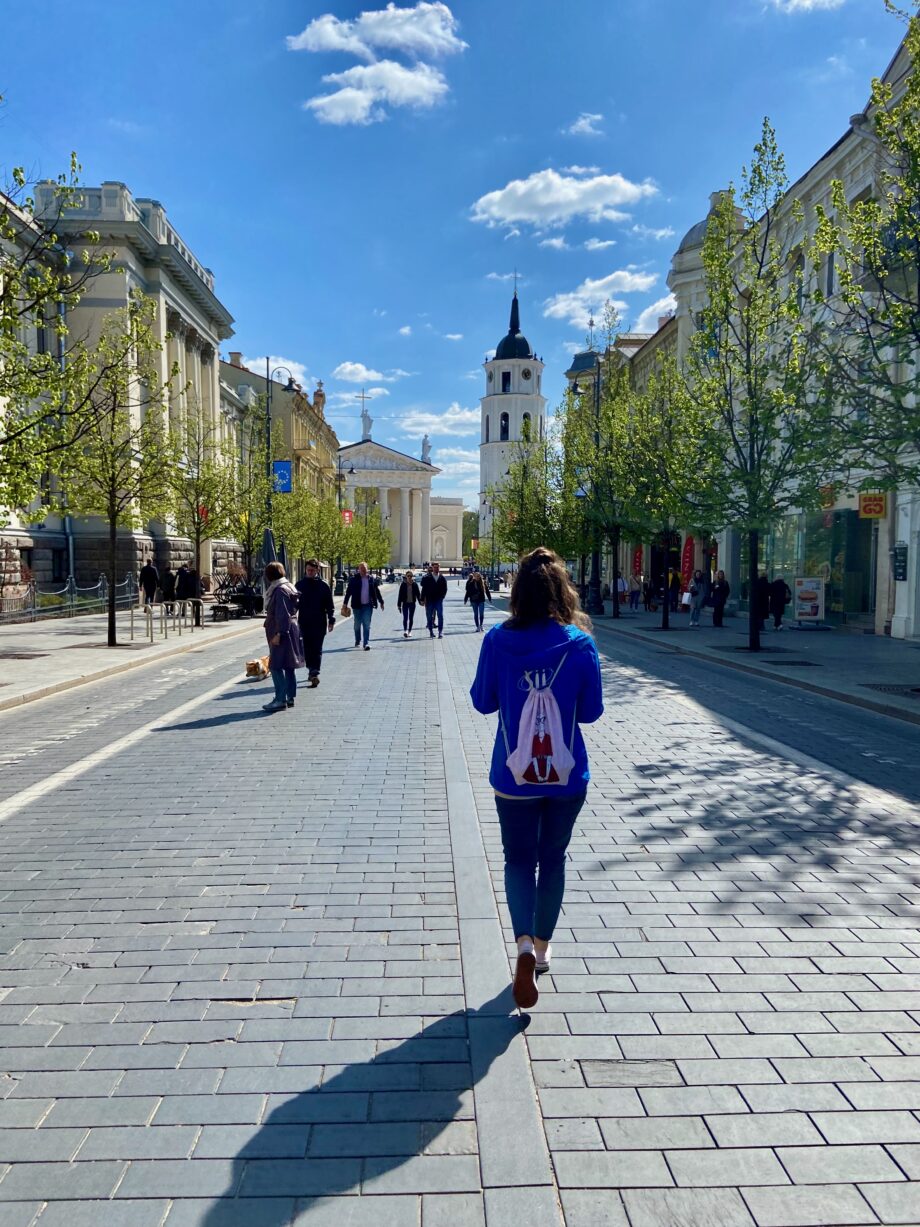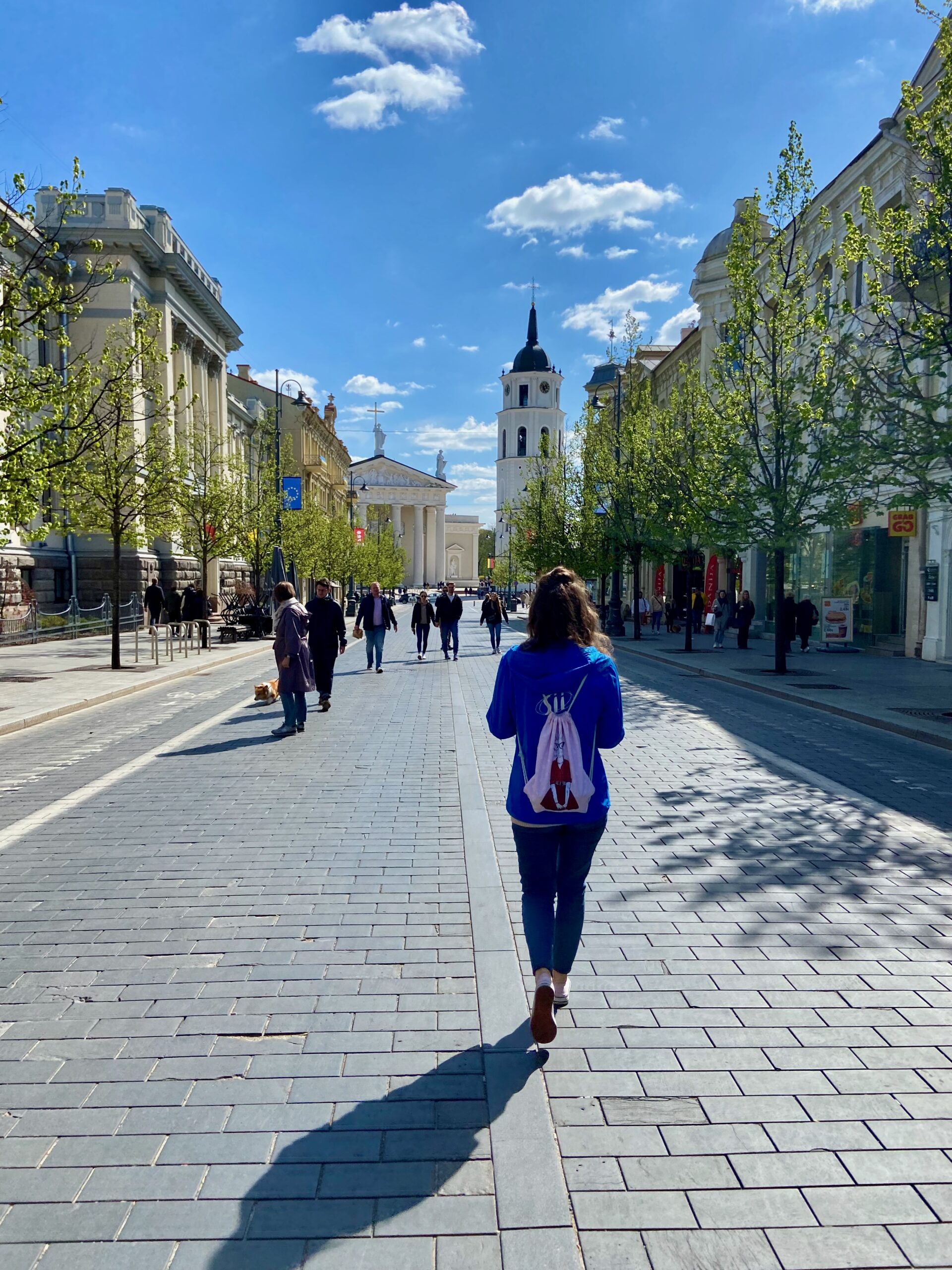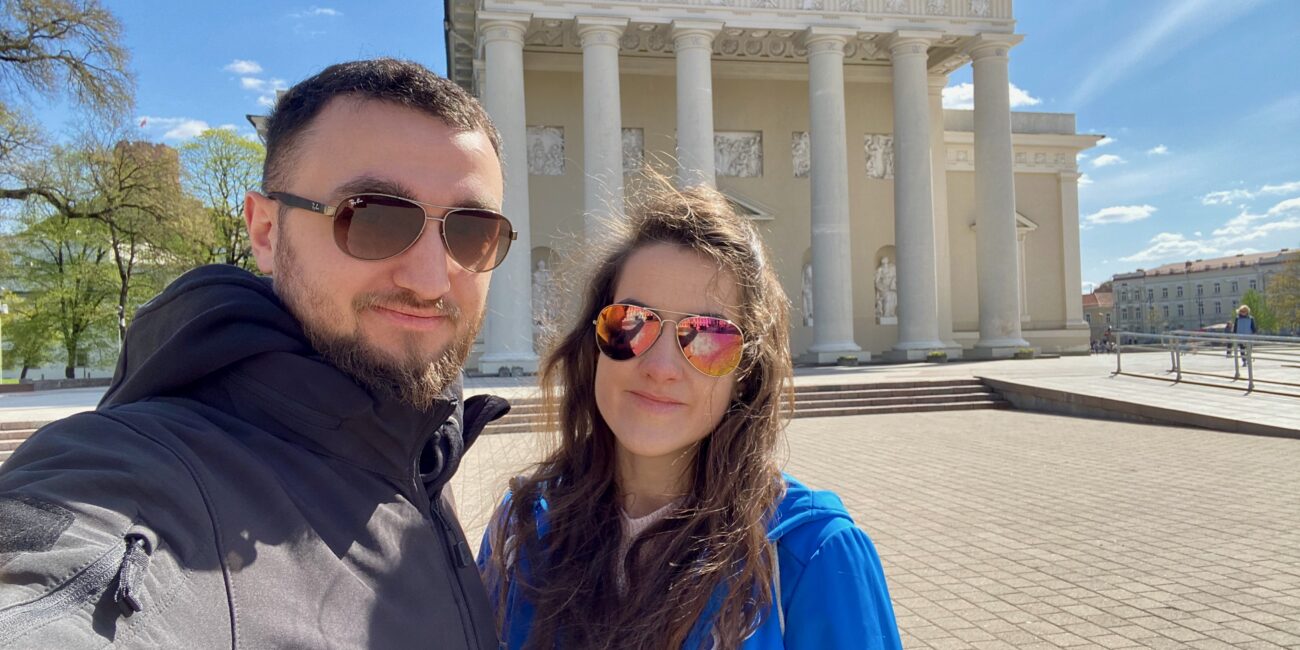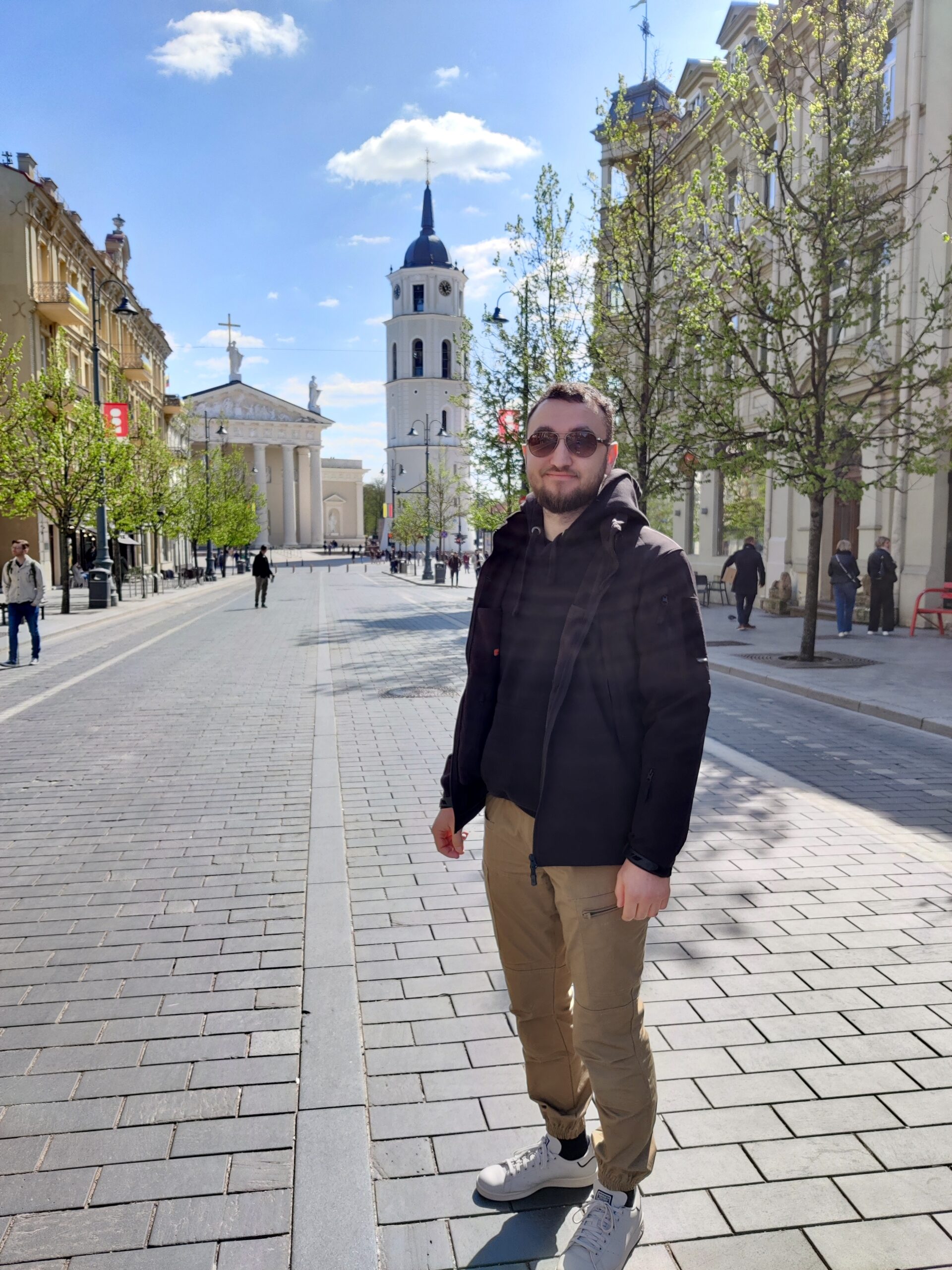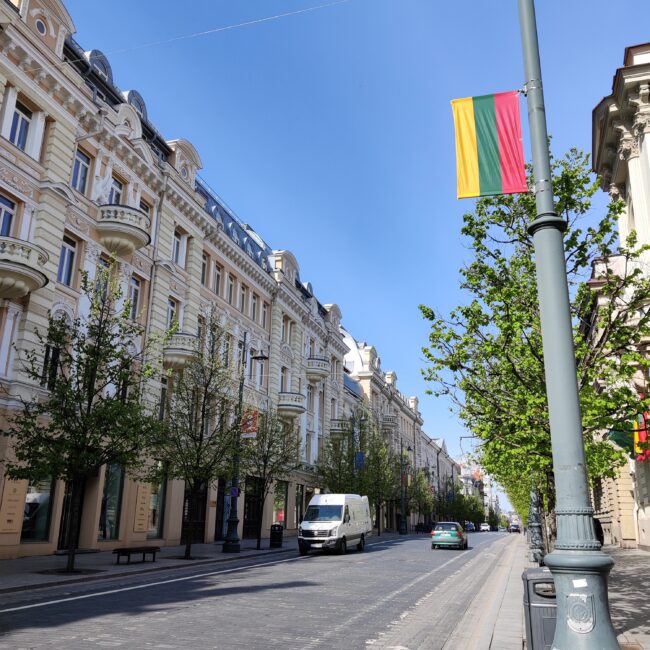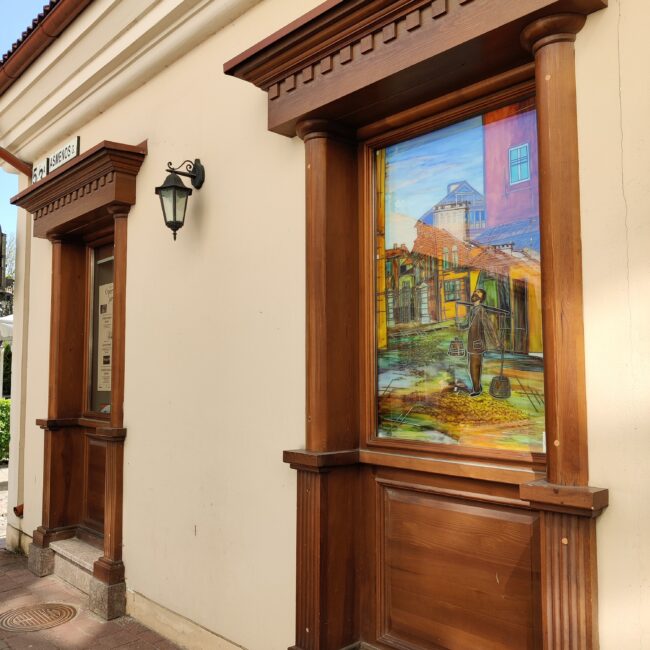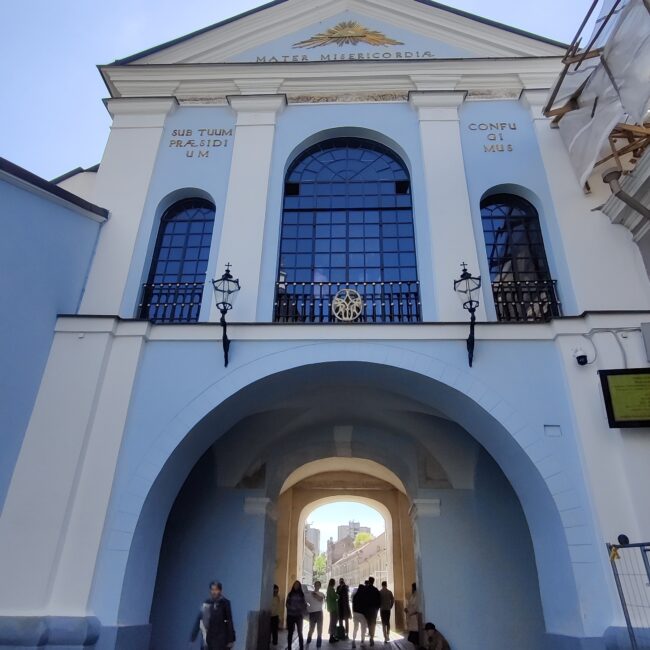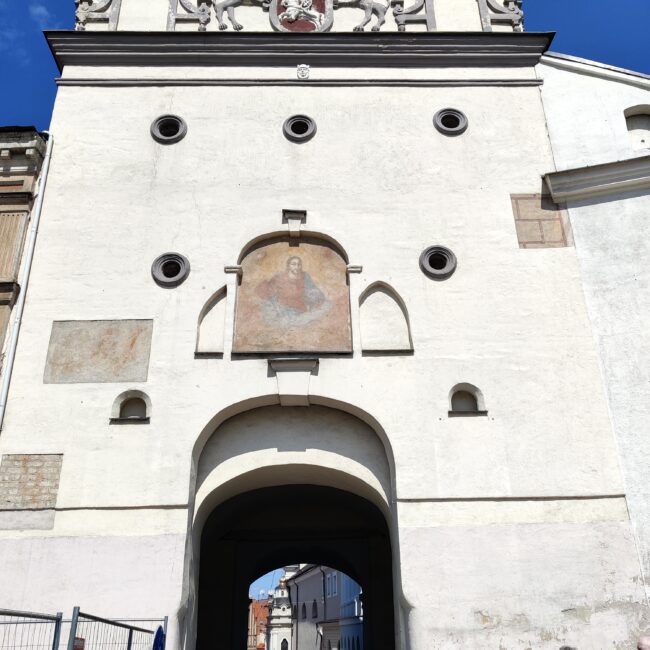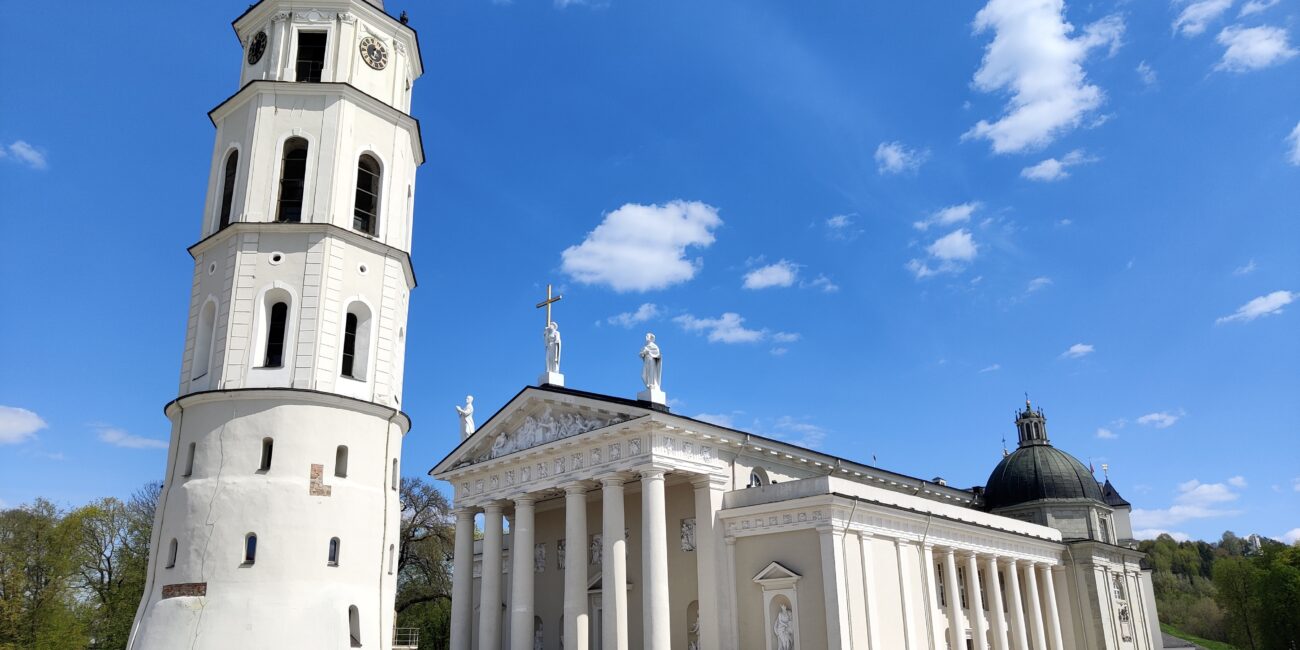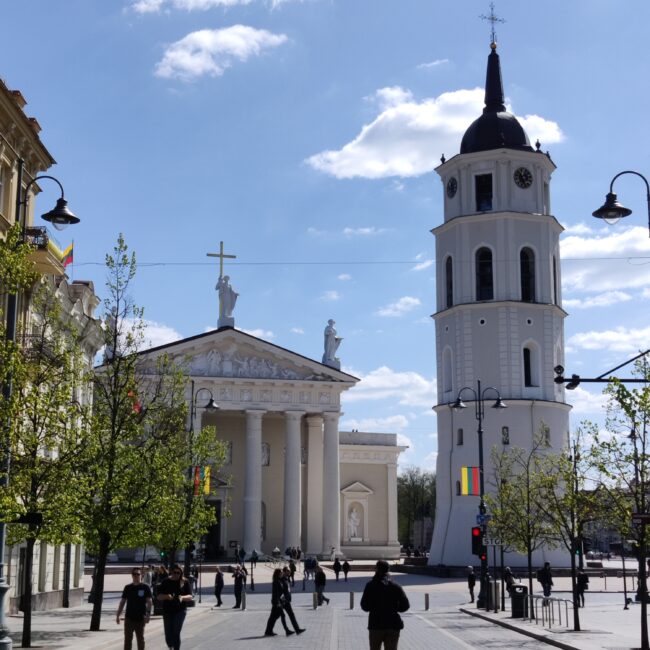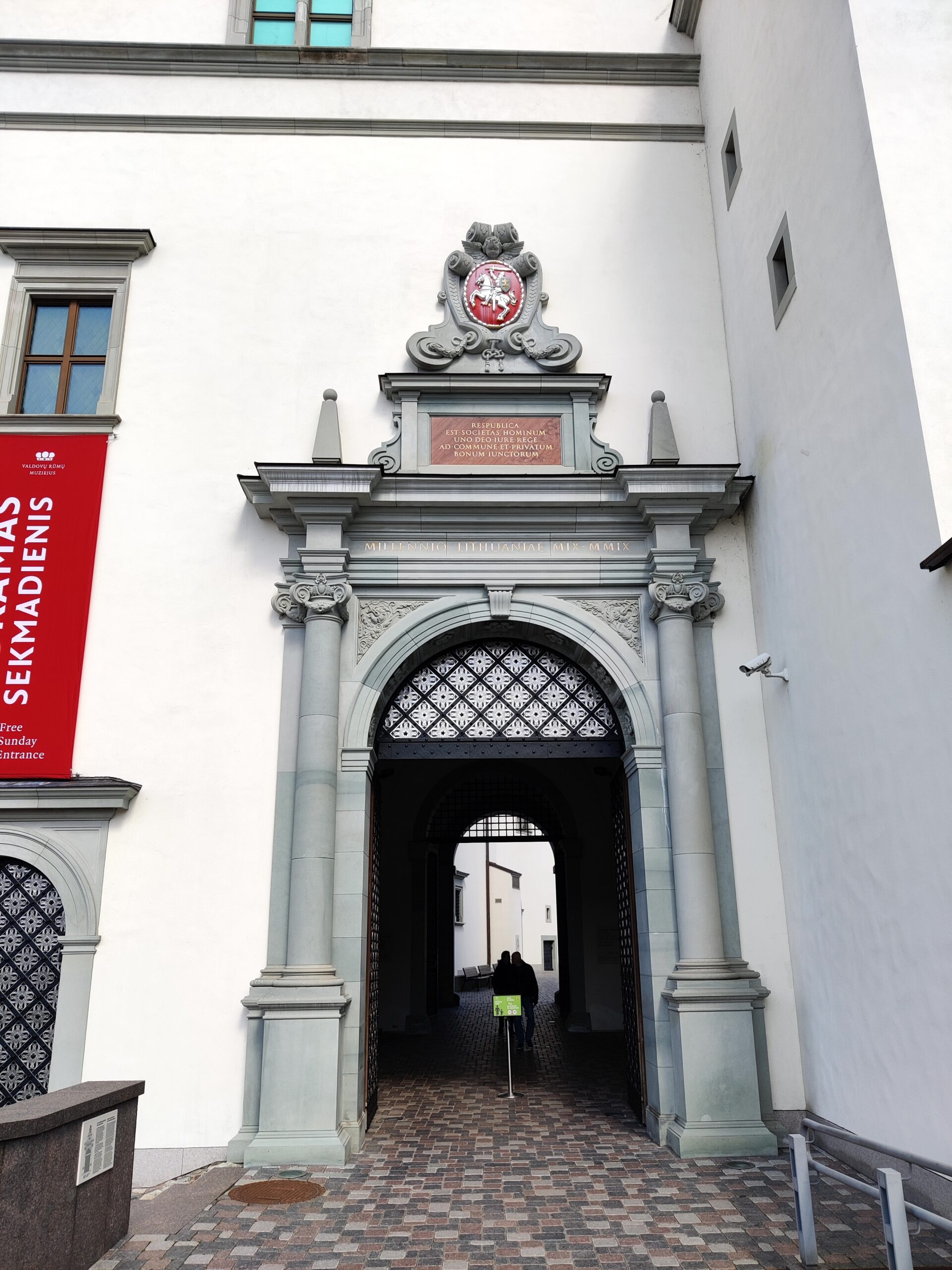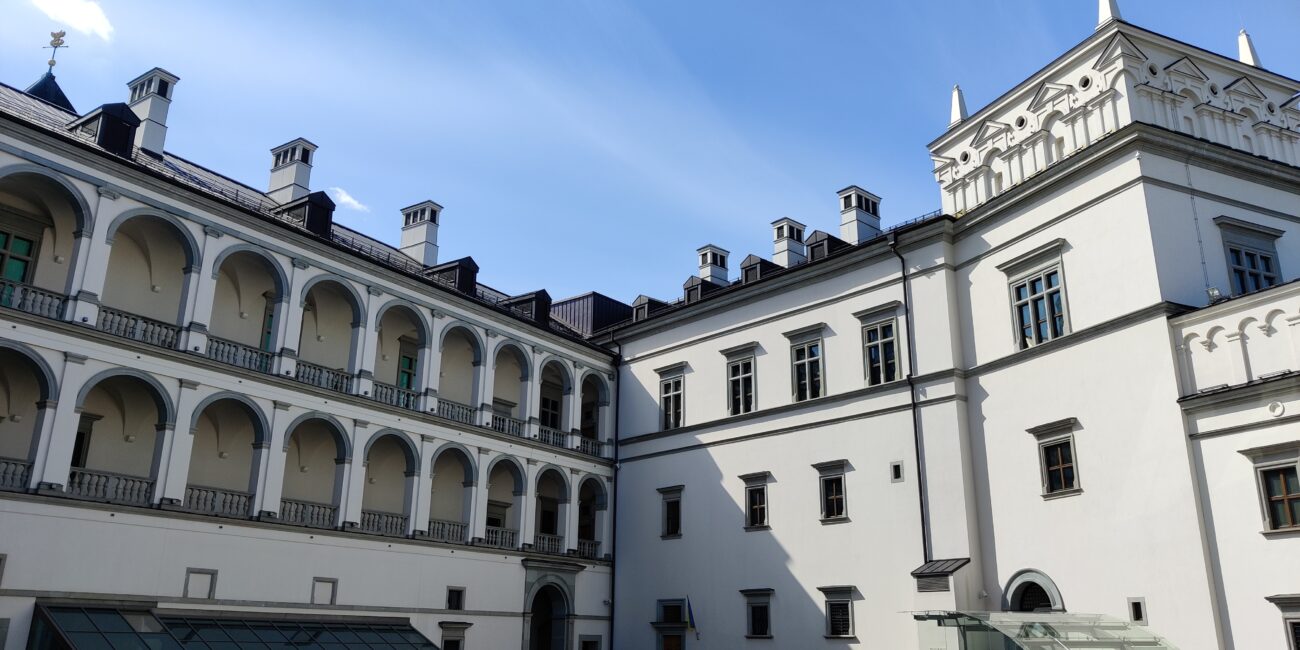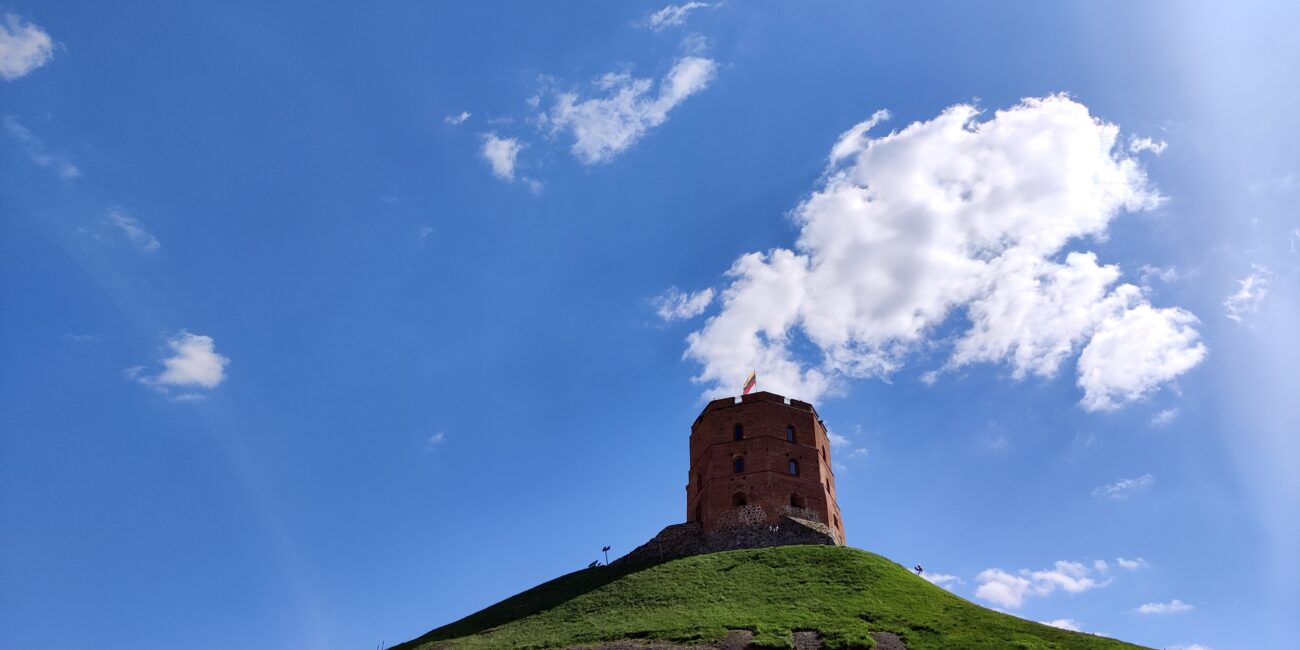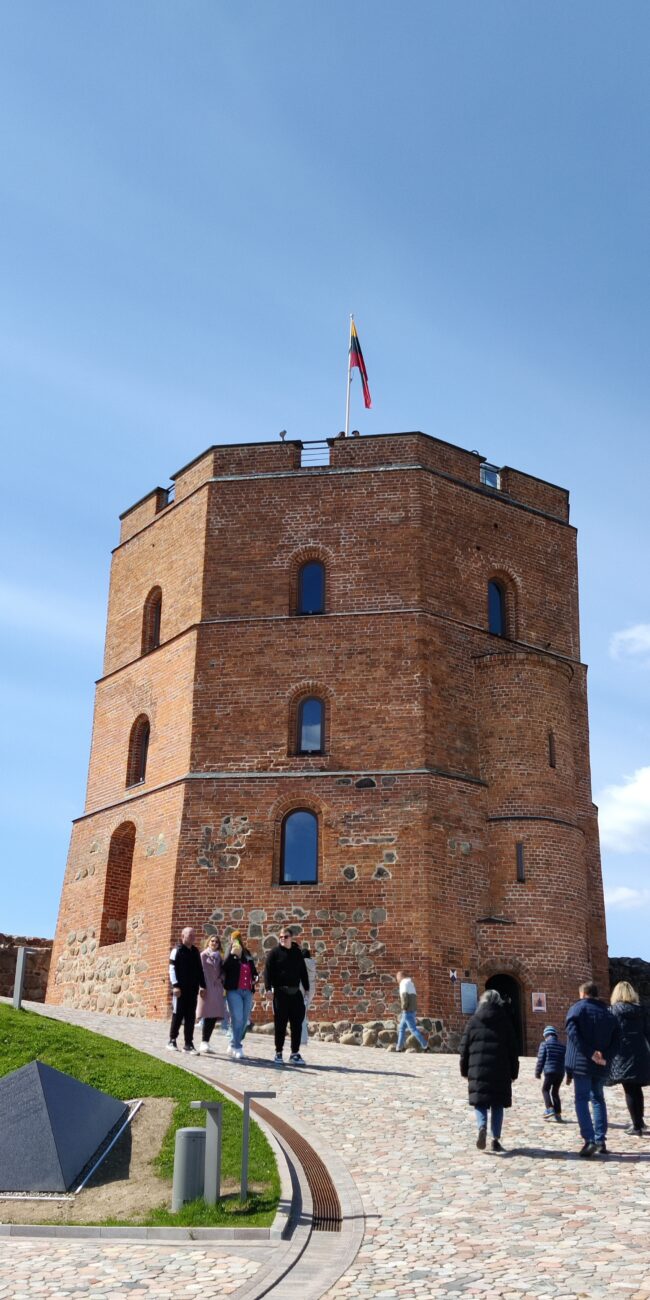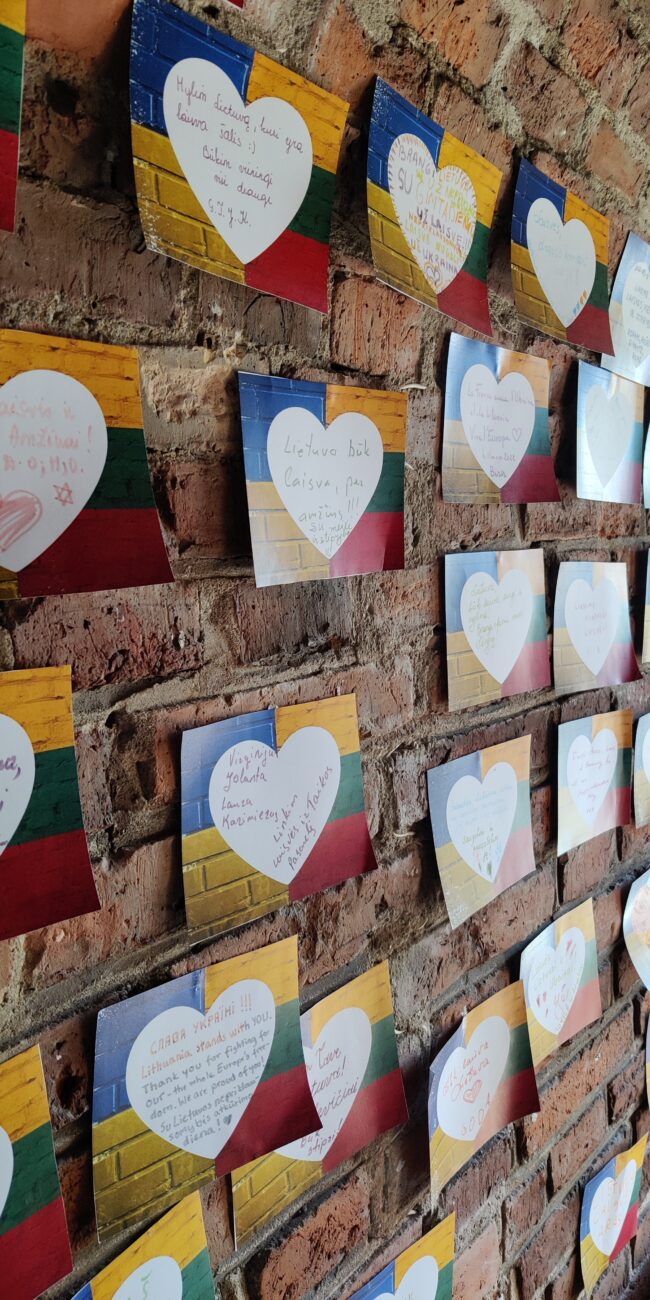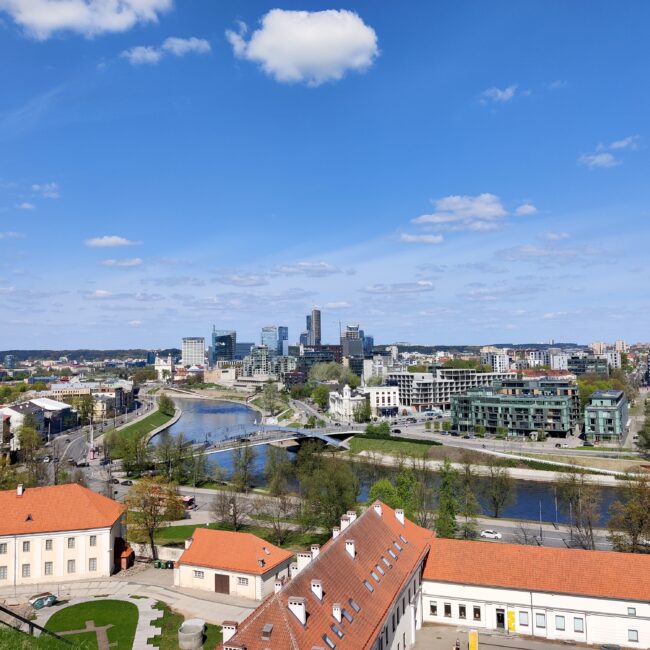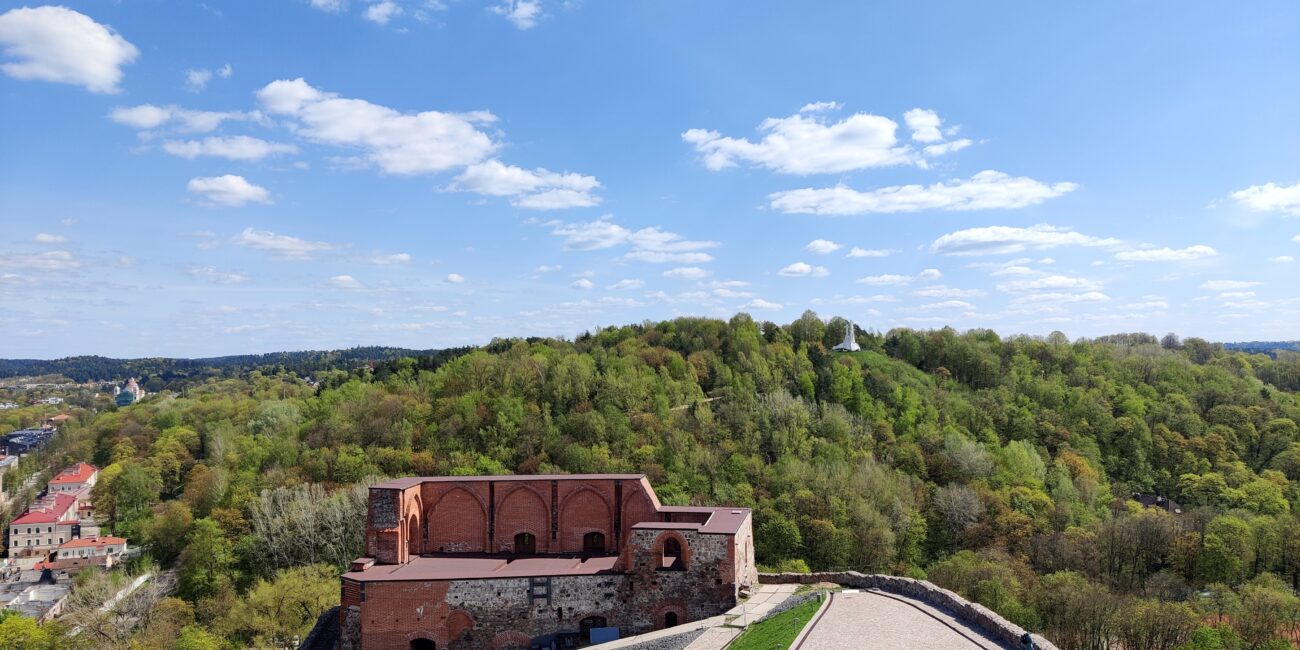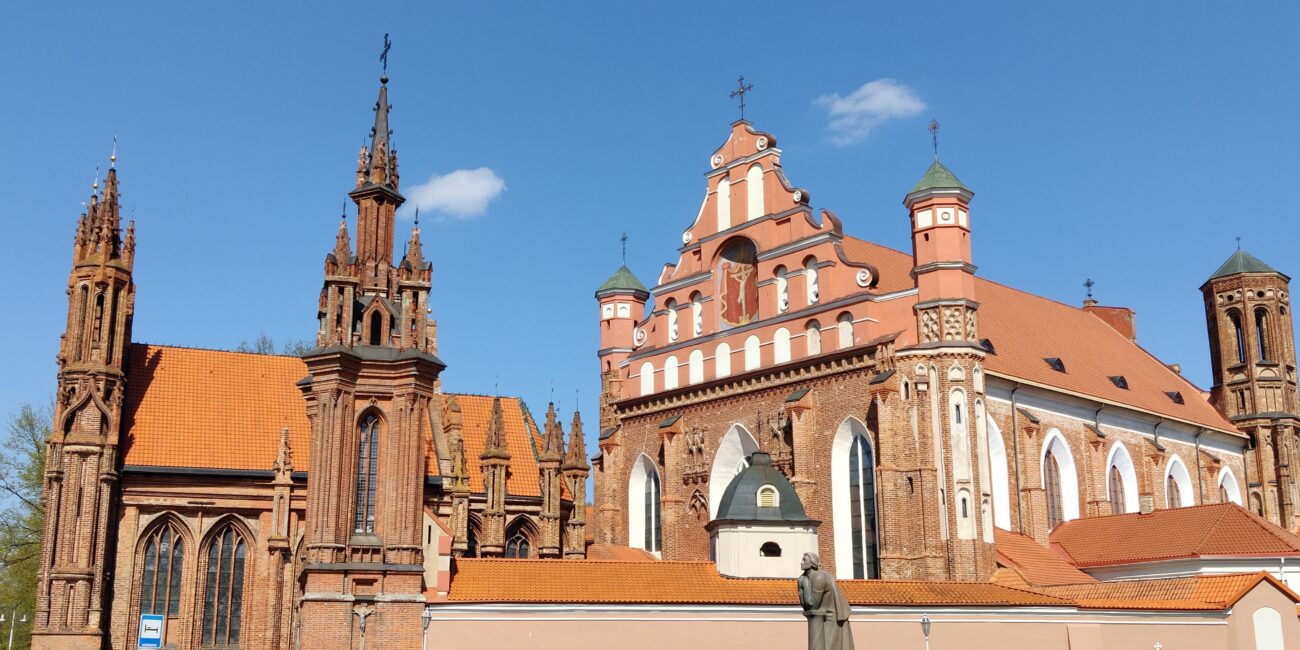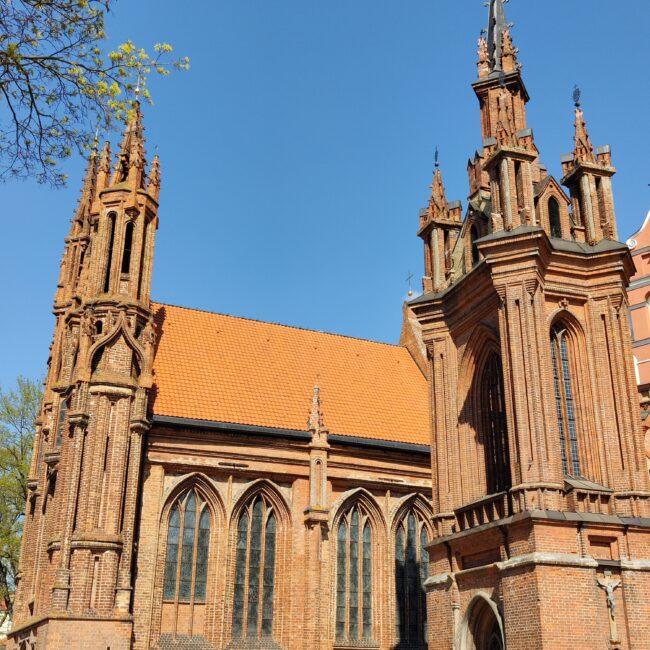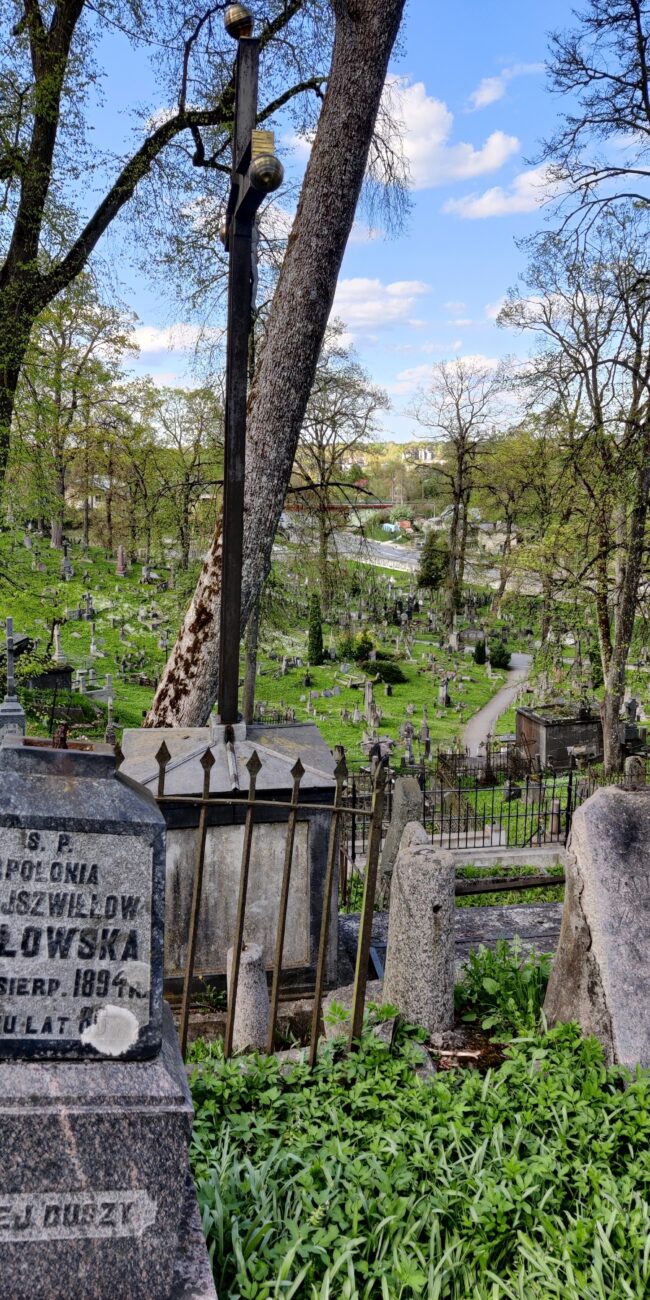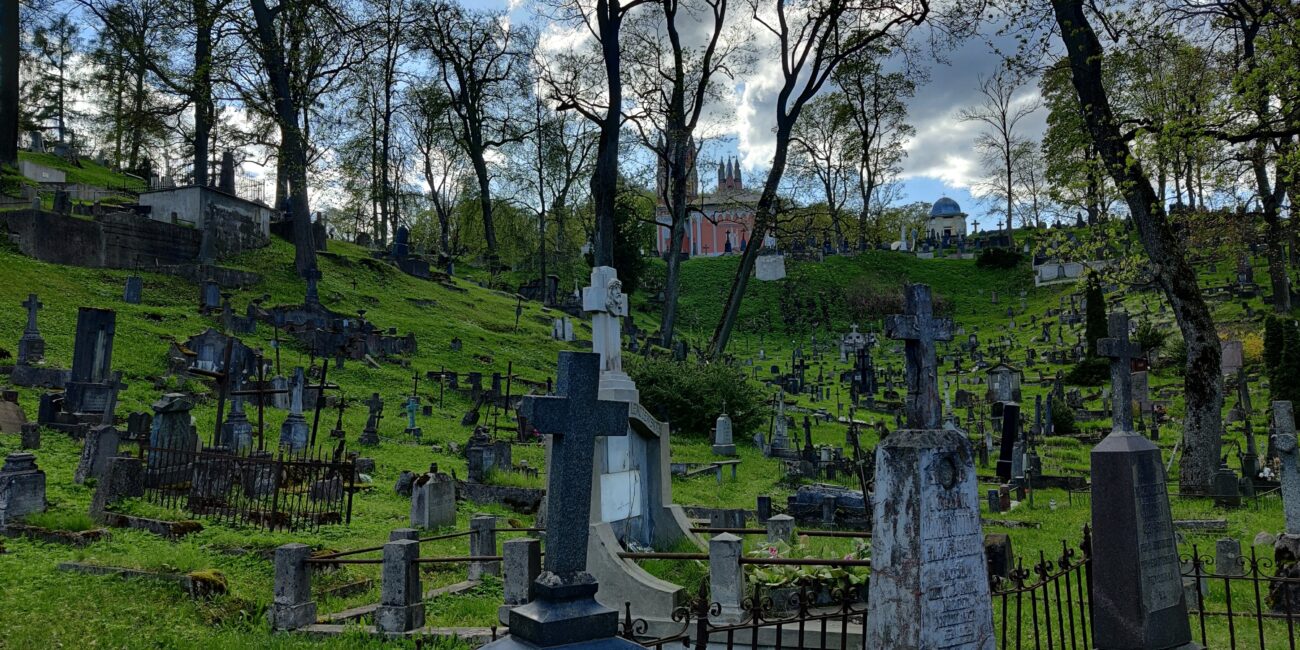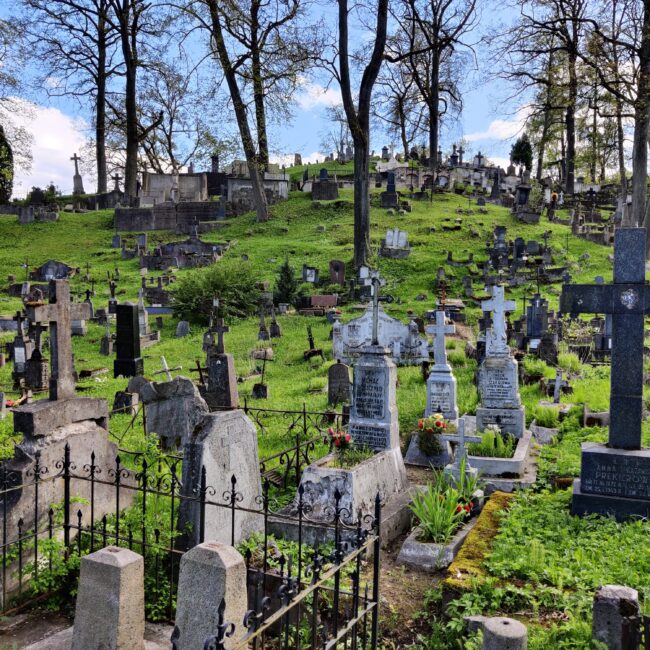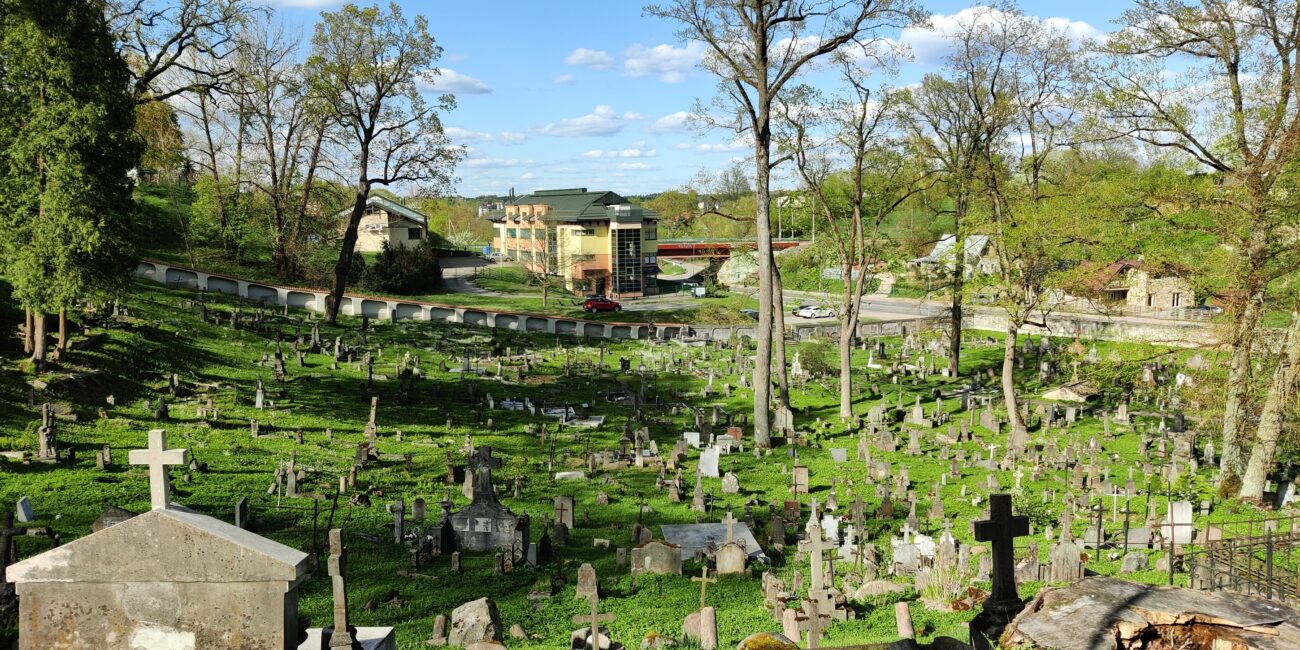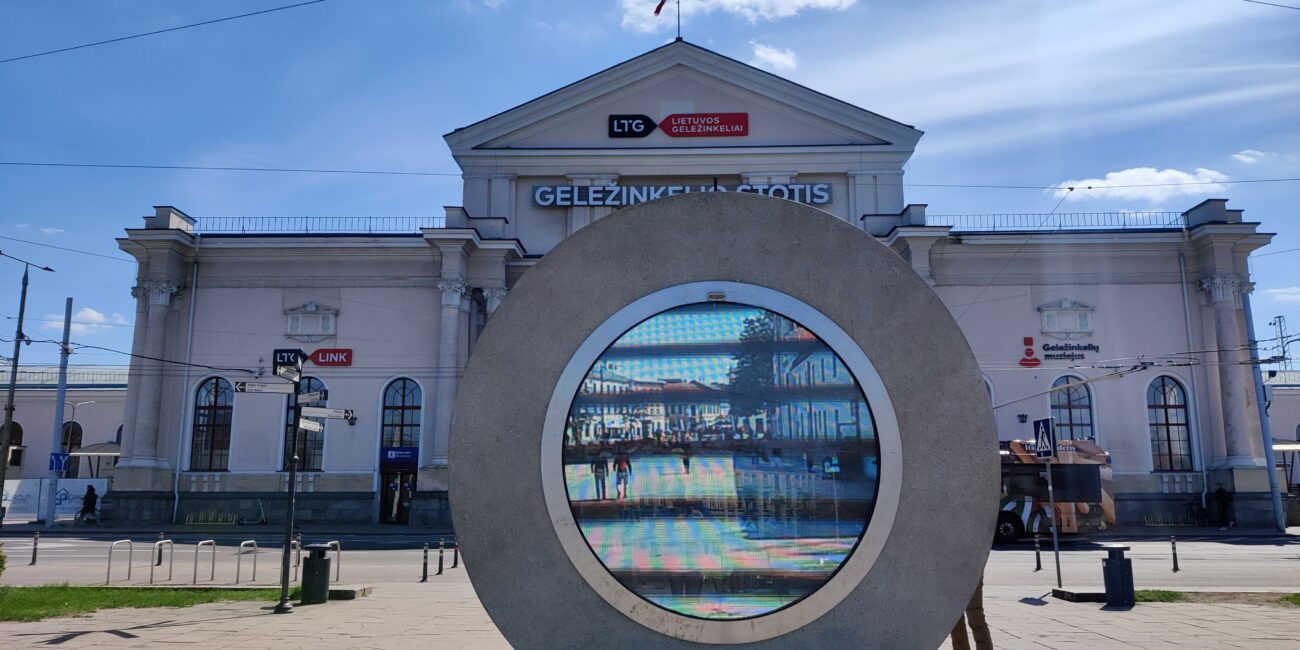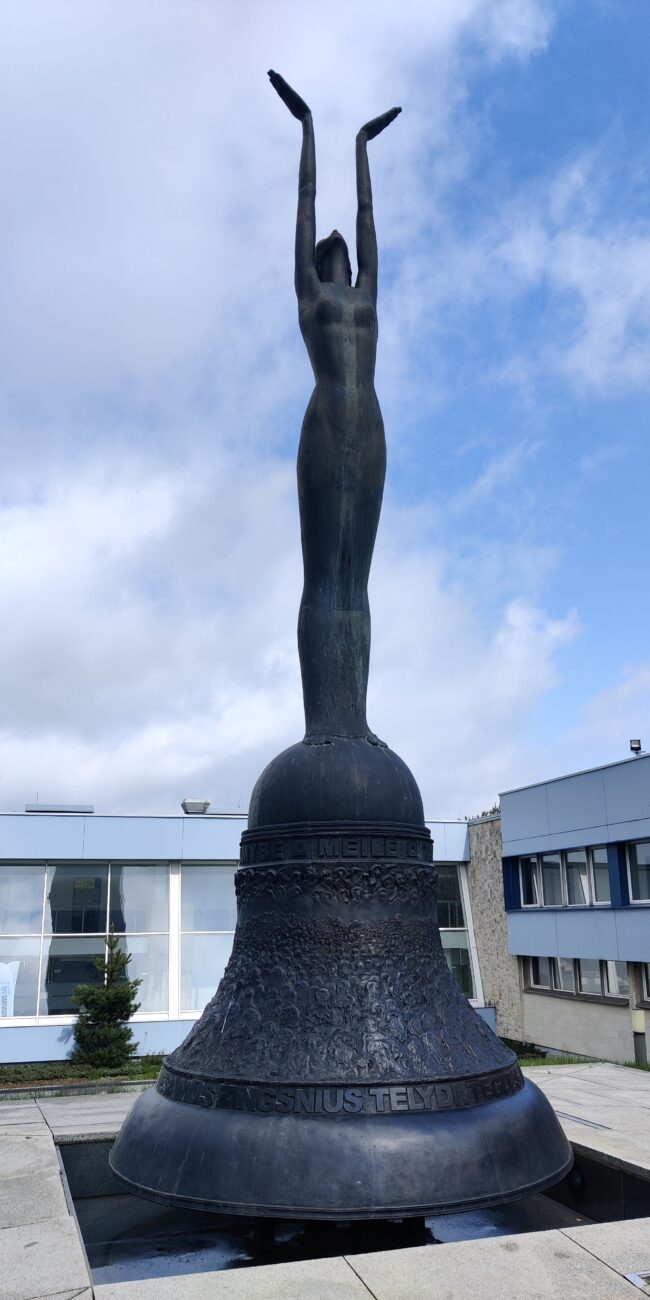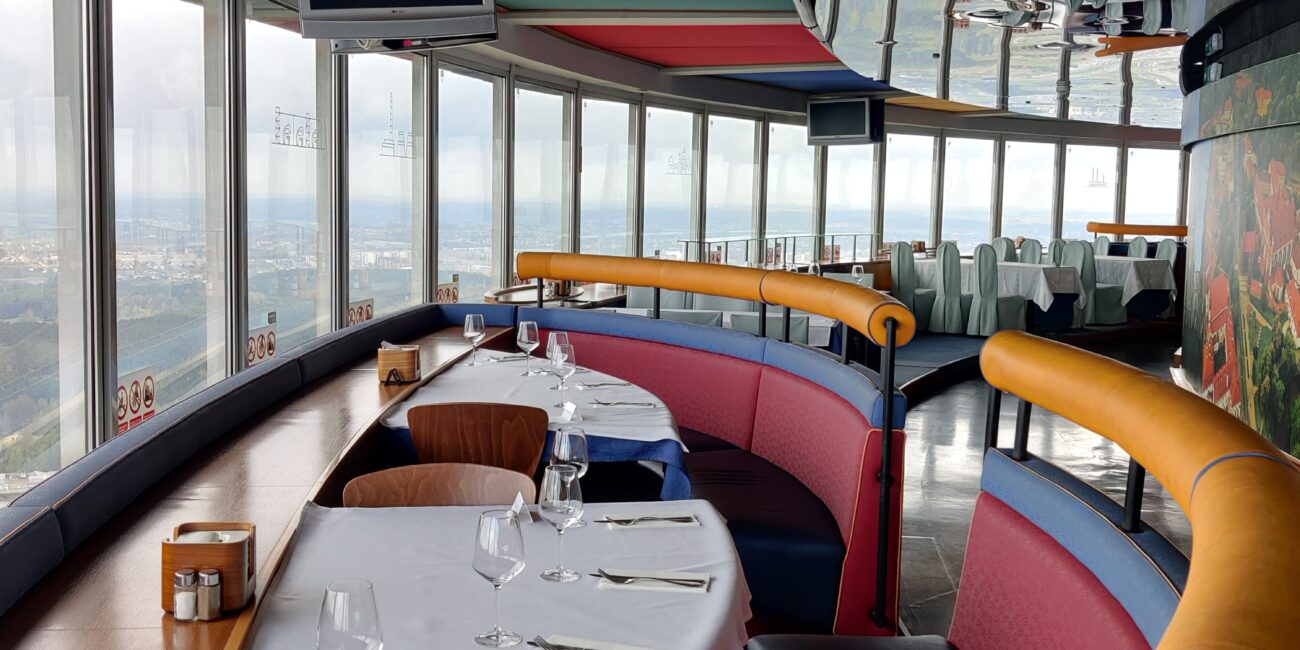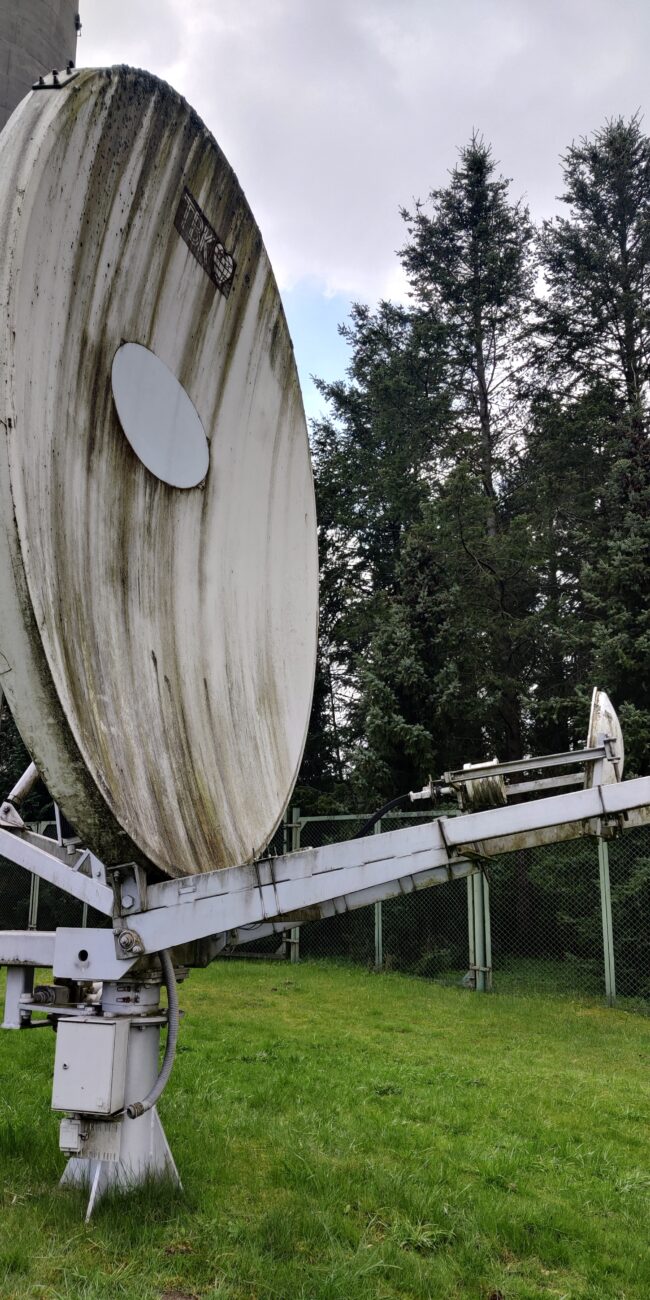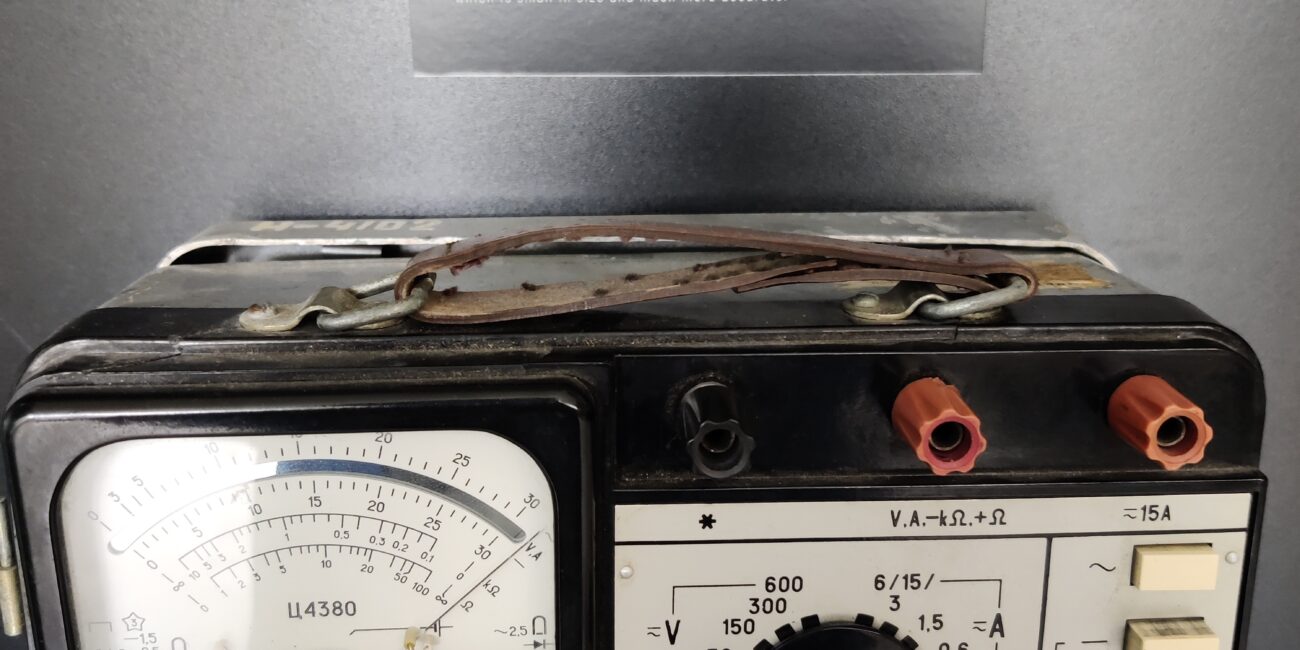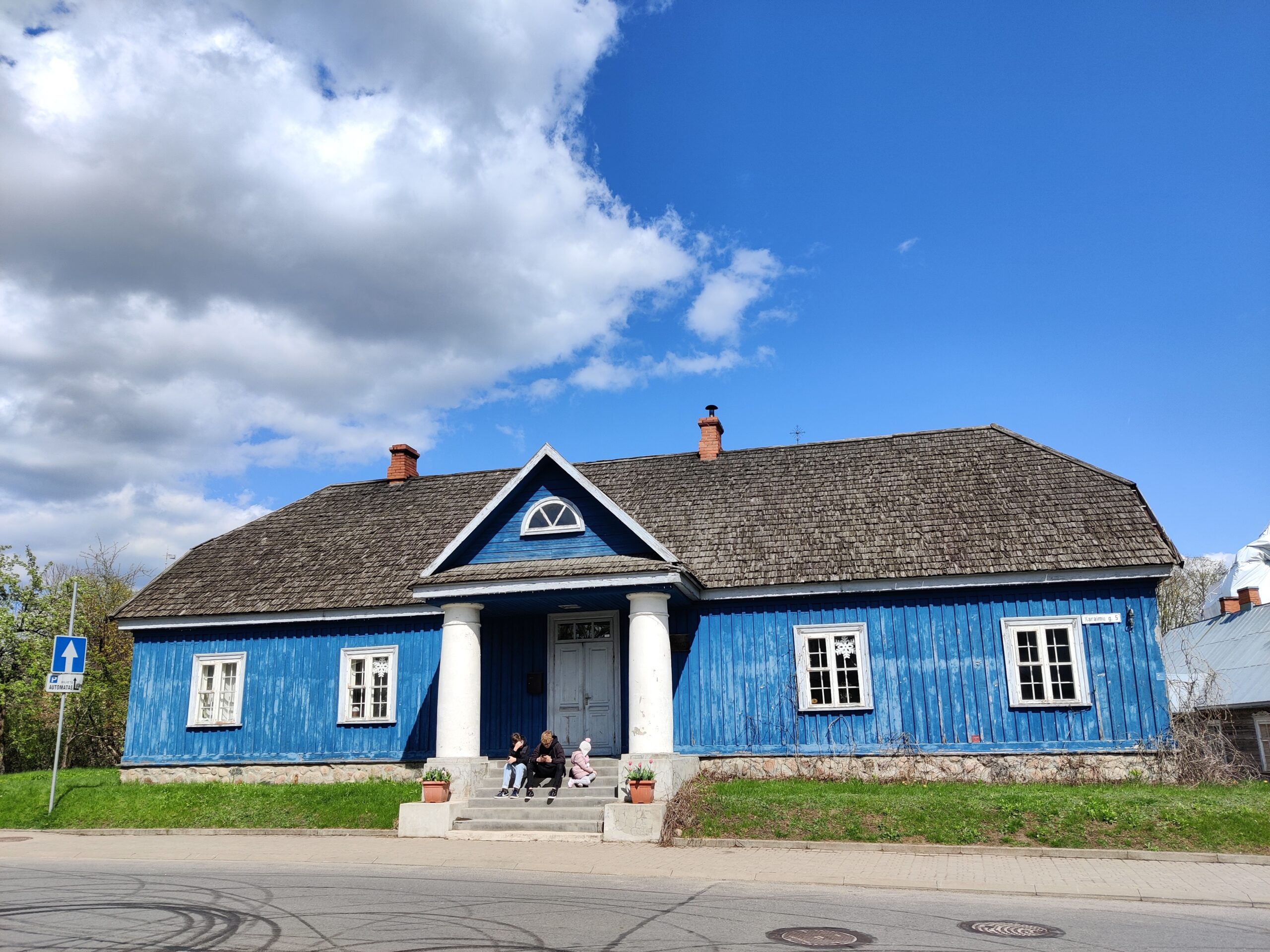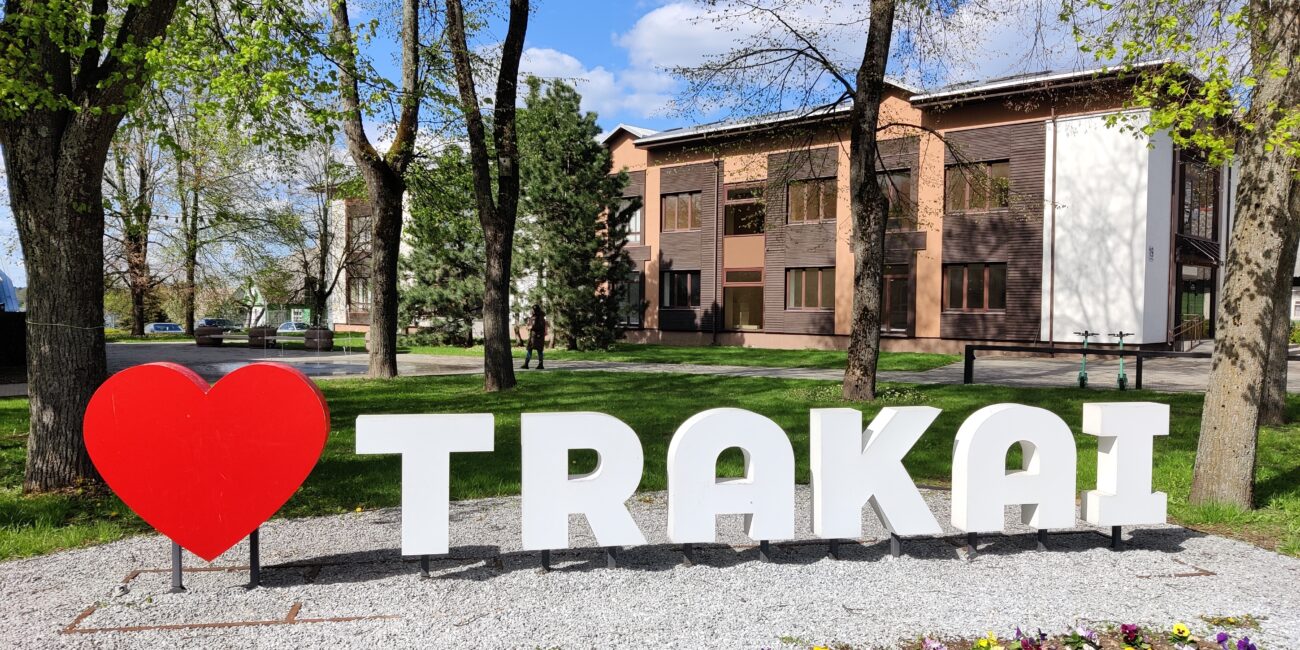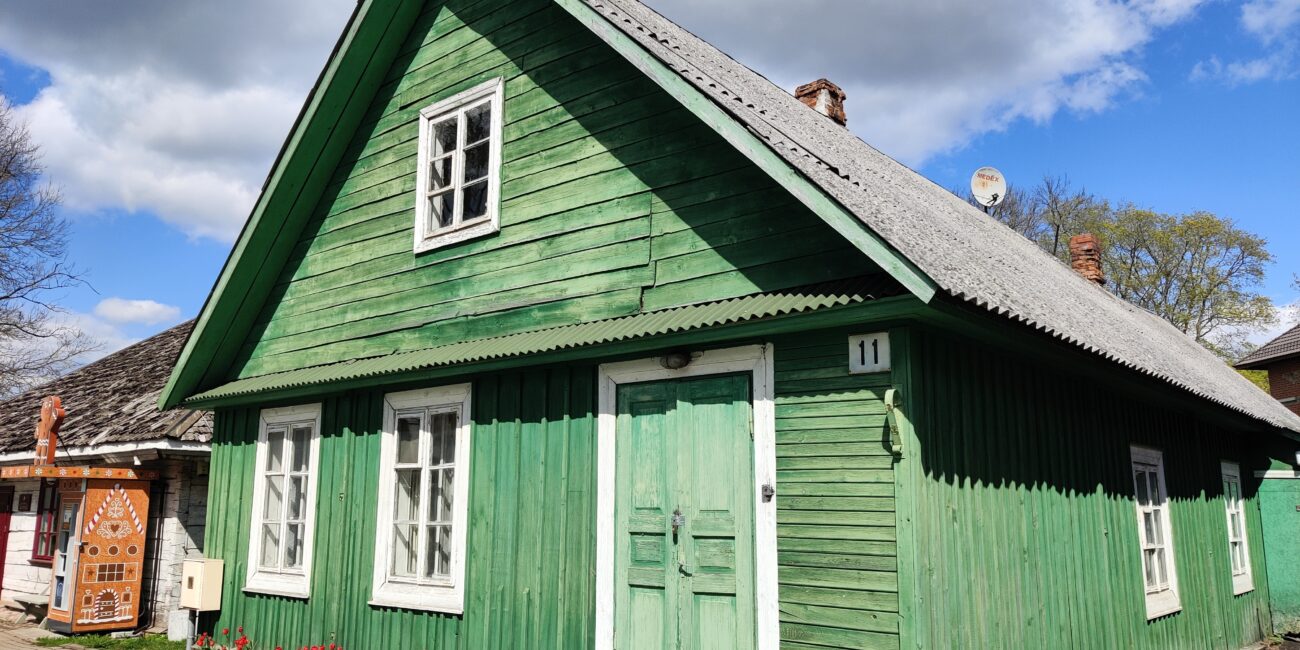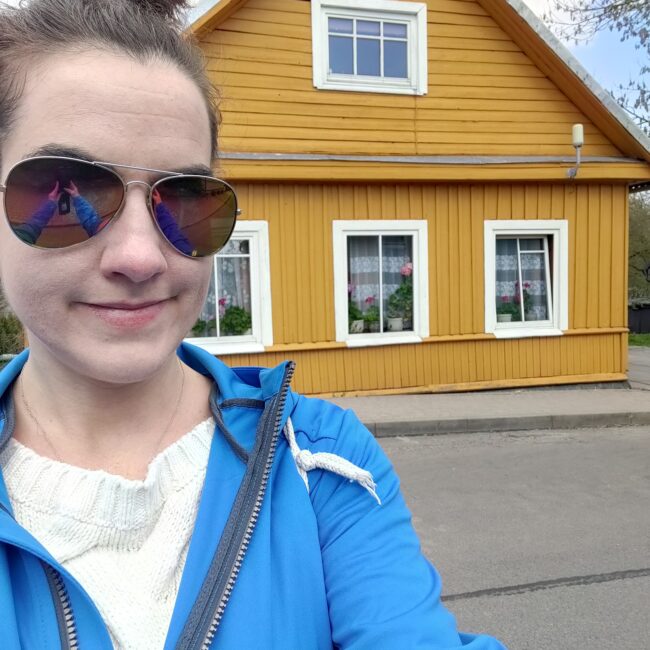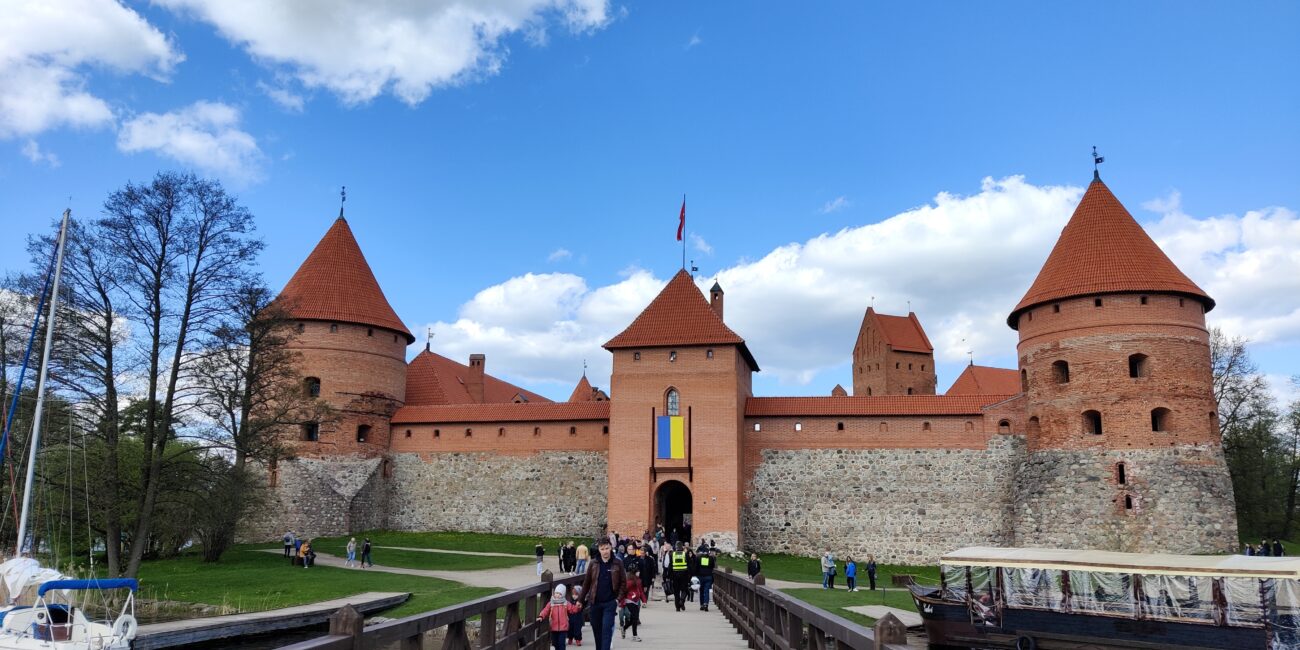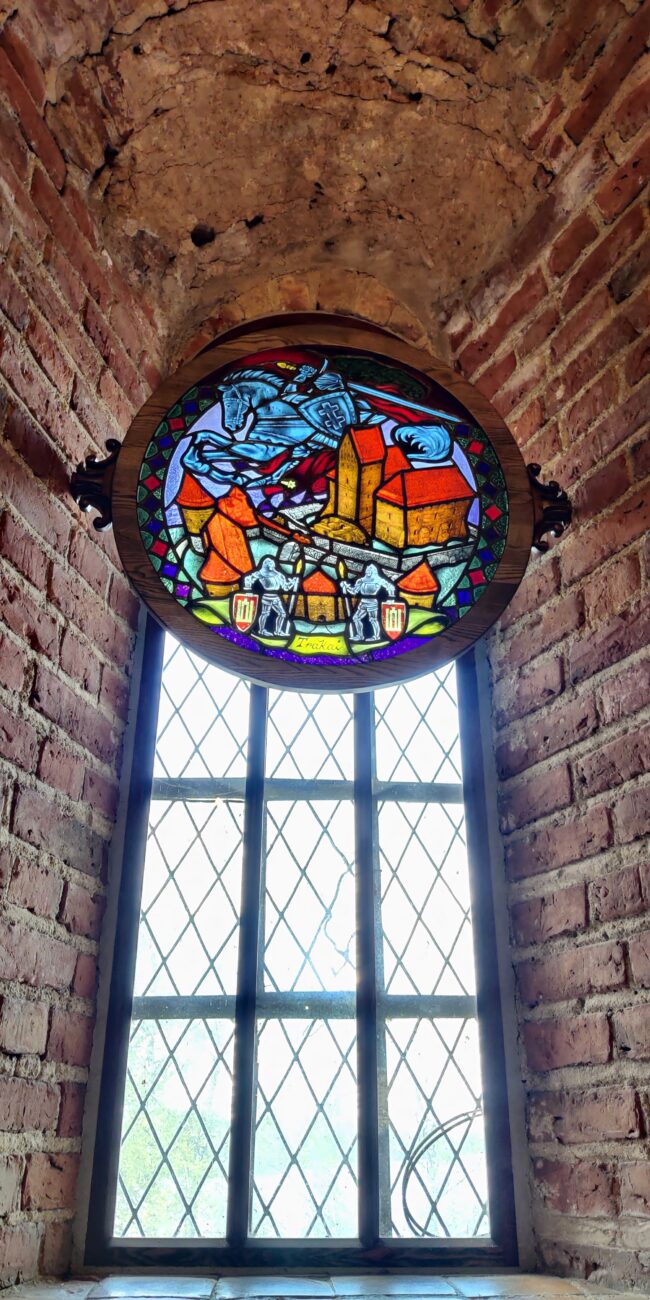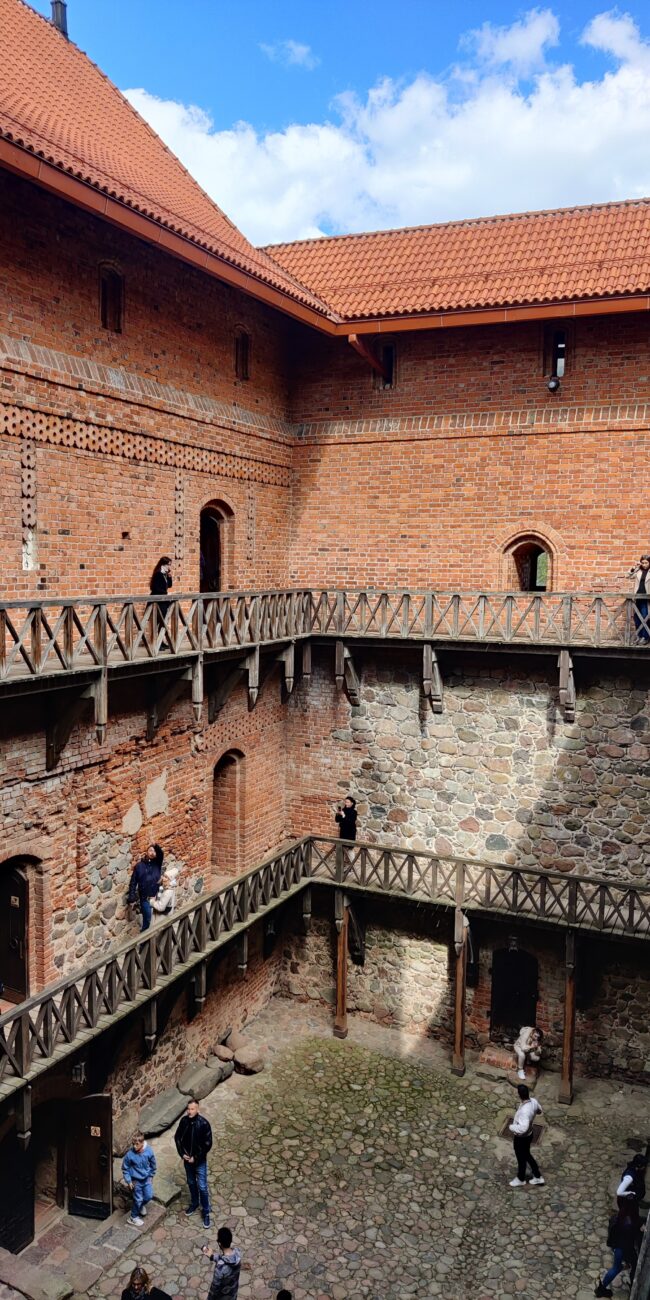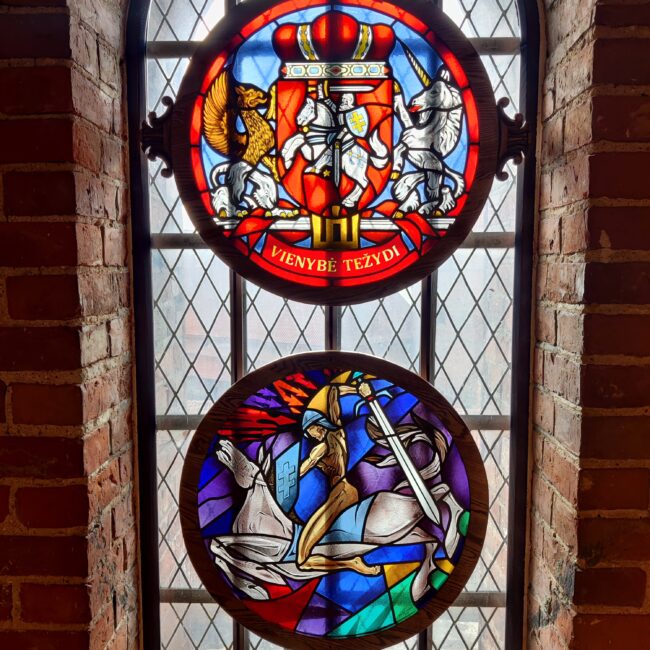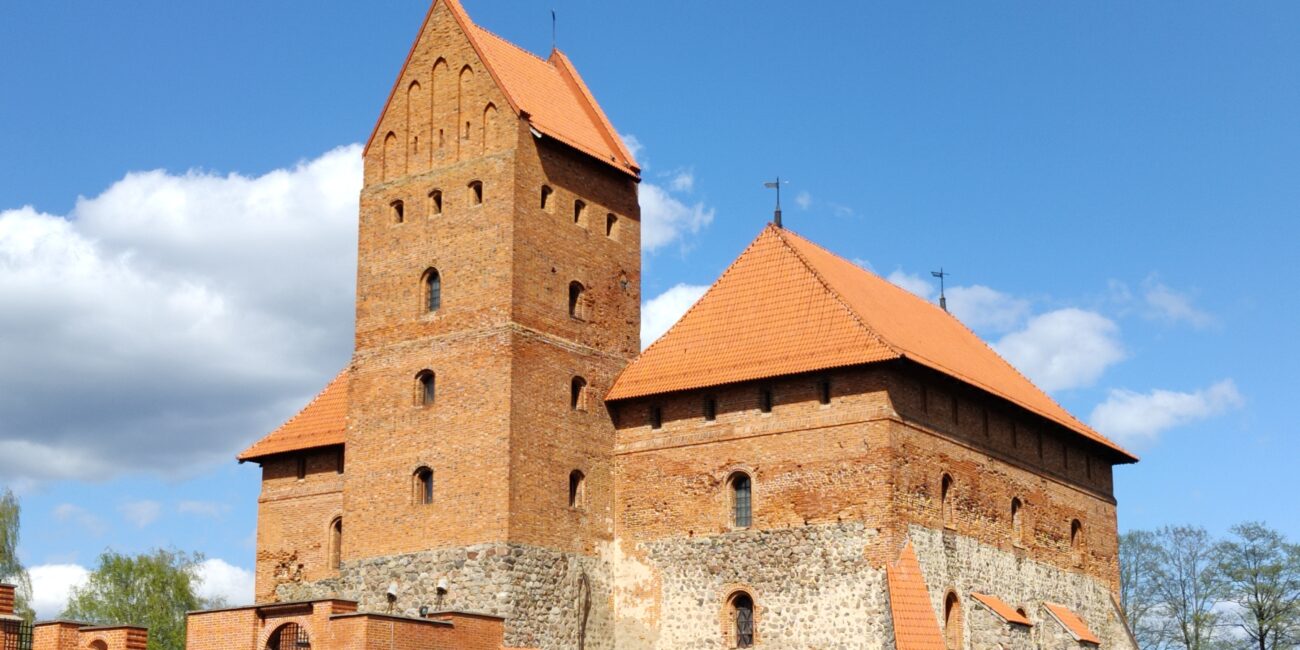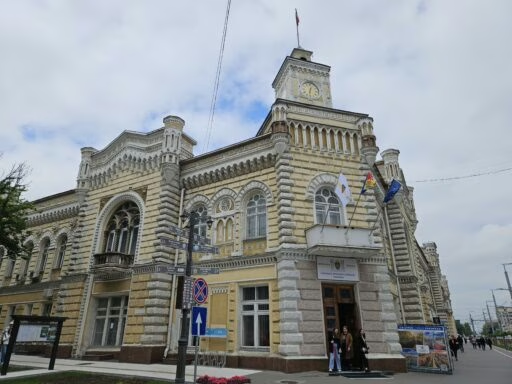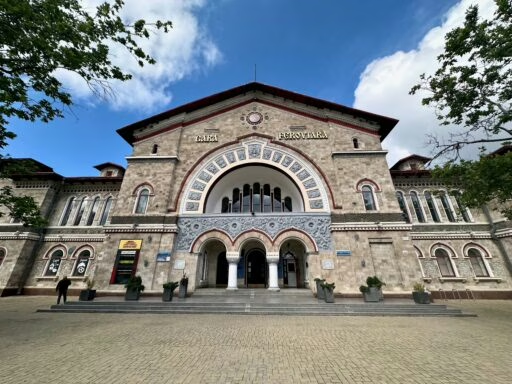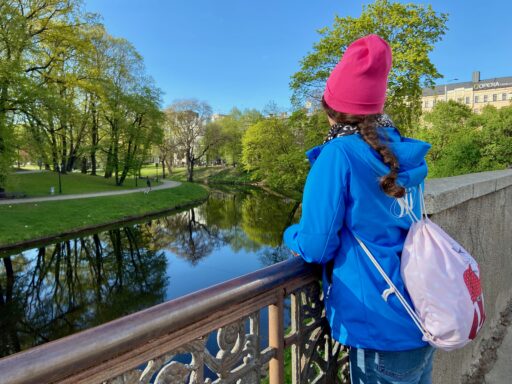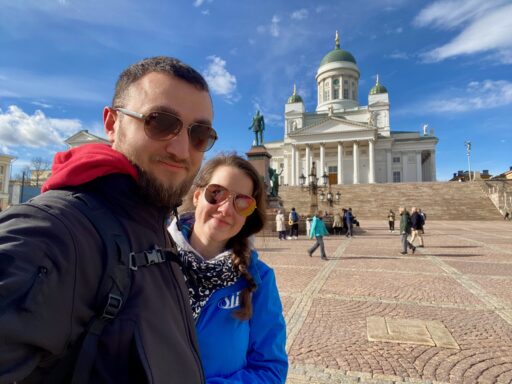This post is also available in:
Polski
Hello! 👋
Vilnius, though small, has its surprises. We spent two days here – or rather a day and a half – exploring at a relaxed pace. As is often the case during trips, time always feels shorter than you’d like.
Lithuania’s capital, as we quickly realized, is a compact city, perfect for exploring on foot. Its charming Old Town, hidden corners, and accessible history make it a pleasant place to wander. Don’t expect jaw-dropping attractions, but it’s this simplicity that gives Vilnius its unique charm.
In today’s post, we’ll show you what we managed to see during our short stay. It’s not a long list, but who knows – maybe we’ll inspire you to visit this city and discover it in your own way? 😊
How our journey began
Our May getaway began in Vilnius – the small, peaceful capital of Lithuania. What did this stop have in store for us? What was I able to see? 📍 Enjoy the recap of the first part of the trip! ✨
Old town
The Old Town in Vilnius is the essence of Lithuania’s capital. Narrow streets, historic buildings, and charming squares create a calm, almost idyllic atmosphere. Strolling through this part of the city, you can truly soak in its vibe – lively, yet free of unnecessary rush.
It’s one of the largest and best-preserved examples of Baroque architecture in Central and Eastern Europe, earning it a well-deserved spot on the UNESCO World Heritage list. The Old Town showcases Vilnius at its most picturesque and charming, making it a must-see, even if your time in the city is limited.
Gate of Dawn
The Gate of Dawn is one of the most recognizable landmarks in Vilnius. It’s the only surviving one of the ten city gates that once surrounded the city. Built in the early 16th century as part of the city’s fortifications, it now serves as an important religious sanctuary.
Above the gate is a chapel housing the miraculous image of Our Lady of the Gate of Dawn, also known as Our Lady of Mercy. This image is venerated by both Catholics and Orthodox Christians, drawing numerous pilgrims from all over the world.
👉 For more information, visit the official website of the Gate of Dawn.
Archcathedral Basilica of St. Stanislaus and St. Vladislav
The Archcathedral Basilica of St. Stanislaus and St. Vladislav is the most important Catholic church in Lithuania and one of the most recognizable symbols of Vilnius. Located in the heart of the city, on Cathedral Square, it attracts both tourists and locals, serving as a central point for religious and cultural life in the capital.
The first cathedral on this site was built in 1387, the year of Lithuania’s baptism, at the initiative of Władysław Jagiełło. The current Neoclassical appearance is the result of a reconstruction in the late 18th century, designed by architect Laurynas Gucevičius. The cathedral’s monumental façade with its colonnade and the freestanding bell tower draw attention, giving the church its distinctive character.
It’s a place worth visiting, whether you’re interested in history, architecture, or the spiritual aspect of Vilnius. The basilica is one of those landmarks in the city that never fails to leave an impression.
👉 For more information, visit the official website of the Archcathedral Basilica.
Lower Castle in Vilnius
The Lower Castle, also known as the Palace of the Grand Dukes of Lithuania, is a reconstructed former residence of the Lithuanian rulers, located right next to the Vilnius Cathedral on Cathedral Square. Originally built in the late Gothic style during the reign of Alexander Jagiellon, the castle was repeatedly renovated, adopting Renaissance and early Baroque features over time.
In the 17th century, the castle was damaged, and its remnants were dismantled at the beginning of the 19th century. It wasn’t until 2002 that reconstruction work began, which was completed in 2009, restoring the castle to its former glory.
Currently, the castle houses a museum that showcases the history of Lithuania and the daily life of its rulers. Visitors can admire the recreated interiors, art collections, and participate in various cultural events held at the palace.
👉 For more information, visit the official website of the Palace of the Grand Dukes of Lithuania.
Gediminas Hill
Giedymin Hill, also known as Castle Hill, is one of the most iconic landmarks in Vilnius. According to legend, it was here that Prince Giedymin had a dream about an iron wolf, which inspired him to found the city.
At the top of the hill stands the Gedymin Tower – the only remaining tower of the former Upper Castle. From its viewing platform, visitors can enjoy an impressive panorama of Vilnius, which includes both the historic Old Town and the modern districts across the Neris River.
You can reach the hill on foot, but for those who prefer to avoid the steep climb, there is a cable car available. However, it’s important to note that there is an entrance fee to the tower itself.
St. Anne’s Church in Vilnius
St. Anne’s Church in Vilnius is a true gem of late Gothic architecture, distinguished by its intricate, lace-like façade made from 33 types of brick shapes. According to legend, Napoleon Bonaparte, captivated by its beauty, wanted to move the church to Paris.
The church was built at the turn of the 15th and 16th centuries, funded by the Grand Duke of Lithuania and later Polish King Alexander Jagiellon. Though the interior of the church is small, it captivates with its late Baroque altars designed by Jan Krzysztof Glaubitz.
Next to the church stands a Neo-Gothic bell tower from 1874, designed by Nikolai Čagin, as well as a monument to Adam Mickiewicz. Nearby, it’s also worth visiting the Church of St. Francis and St. Bernard, which, together with St. Anne’s Church, forms a harmonious architectural ensemble.
The Rasos Cemetery
The Rasos Cemetery in Vilnius, established in 1801, is one of those places that leaves an impression with its location and atmosphere. Spanning picturesque hills and filled with old tombstones and monuments, it seems to tell the story of past generations. Among the many graves, you can find those that have withstood the test of time and the storms of history.
This place is especially significant for Poles, as it houses the “Mother and Son’s Heart” Mausoleum, where the heart of Józef Piłsudski rests beside that of his mother. But these aren’t the only interesting graves – as you walk among them, you’ll come across the final resting places of professors, artists, and soldiers who shaped the history of the region.
We hadn’t visited cemeteries during our previous travels, but this place made us realize how much you can learn from them. Every tombstone is part of a larger story, often shaped by time and nature, yet still present. A walk through Rasos Cemetery is not just a moment of contemplation, but also a reflection on the passage of time and history, something truly worth noticing.
Portal
At the Vilnius railway station stands something that immediately catches the eye – the Wilno-Lublin Portal. This circular structure, featuring a screen and camera, allows residents of these two cities to “see” each other in real-time. The entire project was initiated by the Benediktas Gylys Foundation with one main goal – to bring people closer together, no matter where they live, and promote a sense of community.
The portal was launched in 2021 and has since served as a symbolic bridge between Vilnius and Lublin. In the Lithuanian capital, it is located right in front of the railway station, while in Lublin, it can be found at the Lithuanian Square. Moreover, thanks to live streaming, passersby in both cities can catch a glimpse of daily life in their partner city – a bit like a quick “trip” to another country without leaving their spot.
And it doesn’t stop there. In 2024, the project took on a global dimension with the addition of new connections to New York and Dublin. This made the Portal even more special, connecting not just two cities in Europe, but also people from different continents.
Vilnius TV Tower
The Vilnius Television Tower is the tallest building in Lithuania, standing at 326.5 meters. Located in the Karolinka district, it is one of the city’s most recognizable landmarks, visible from many parts of Vilnius. While it is an important site in Lithuania’s history, our impressions from the visit were mixed.
Outside, the old antennas catch your eye as part of an outdoor exhibition. Unfortunately, their condition leaves much to be desired – there are clear signs of weather damage and a lack of proper maintenance. What could have been an interesting attraction instead gives off an impression of neglect.
The interior of the building is, to put it mildly, quite dated. The decor and technical setup seem to have been frozen in past decades, which may have its charm for fans of retro vibes, but it’s hard to consider it a modern attraction.
The view from the top definitely saves the experience. The revolving restaurant at 165 meters offers a stunning panorama of the city and its surroundings – on a sunny day, you can even spot distant landscapes. For those who love scenic views from above, a visit to the tower can be a fascinating stop on the trip.
👉 For more information, visit the official website of the TV tower.
Trakai
Trakai is a small, charming town located just a short drive from Vilnius, only a few dozen minutes away. If you have a car, getting there is quick and easy, making it a perfect spot for a short getaway from the capital.
The town is famous for its unique atmosphere and picturesque, colorful houses lining the main street. This distinctive architecture is Karaite – a testament to the multicultural history of the region. The Karaites, an ethnic minority brought to Lithuania by Duke Vytautas, have left their mark here, both in the architecture and culinary traditions.
Strolling through Trakai, you can feel the calm, somewhat idyllic atmosphere of the town. It’s the perfect place to escape the hustle and bustle of Vilnius, enjoy the views, and experience a different side of Lithuania. While you’re there, it’s worth trying local Karaite specialties, such as kibinai – meat-filled dumplings that are a local delicacy.
Trakai Castle
The Trakai Castle is one of Lithuania’s most iconic attractions, located on a picturesque island in Lake Galvė. Its history dates back to the 14th century, when Duke Kęstutis began its construction, and his son, Grand Duke Vytautas, continued the work, turning the castle into an important political and military center of the Grand Duchy of Lithuania.
After Vytautas’ death in 1430, the castle’s significance gradually declined, and in the 17th century, during the wars with Russia, it was severely damaged. It wasn’t until the 20th century that reconstruction work began, restoring the castle to its former glory.
Today, the castle serves as a museum, showcasing a rich collection related to the region’s history. Visitors can admire both the castle interiors and exhibitions in the courtyard. Additionally, during the summer, numerous cultural events are held here, including concerts and festivals, attracting tourists from all over the world.
👉 For more information, visit the official website of Trakai Castle.
Summary
We’ve checked off our list of things we wanted to see in Vilnius. Everything we’ve described, we’ve experienced firsthand, and Vilnius turned out to be a calm city with its own unique vibe – more suited for a short trip than a long stay.
Time to move on – Estonia awaits, although the forecast predicts rainy clouds to greet us. But that’s a story for the next part of our May adventure! 🚗 🌧️

